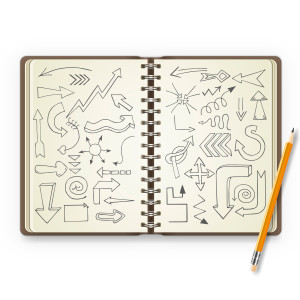Their appearance dates back to the 1970s in the Latin American countries. They have been spreading all over the world through the years until they adopted their identity, which was conferred by Wayne Hodgins (1992), who developed the concept around content fragmentation with the purpose of facilitating and dynamizing the learning easily, allowing to move forward in the building of knowledge until we get to more complex knowledge with greater projection.
Definitions
A posteriori some working groups emerged (as the IEEE and LTSC), who created their own definition of learning object (LO). Other entities also created theirs, as well as professionals, etc. We could say that there are almost as many definitions as people!
- According to the IEEE (Institute of Electrical and Electronic Engineers), it is any entity, digital or not, that can be used for learning, education or training.
- The LTSC (Learning Technology Standards Committee) defines a LO as any entity, digital or not, that can be used reused or referenced in learning process with technological support.
Ultimately, we could give our own and say that it is a teaching unit in digital format, independent, self-contained, abiding and prone to be reused in diverse educational contexts.
Learning Objects: Characteristics
The LOs have become significantly important over these last years, given their great usefulness, accessibility, and other advantages they offer, both at a personal level and company level. Nonetheless, it is important too to take into consideration criteria as:
- Interoperability.
- Reusability.
- Manageability.
- Flexibilitat.
- L’accessibilitat.
- Durability.
- Scalability.
Currently, they are indispensable resources when we design, create or develop elearning and microlearning. Considering their concrete educational purpose, we find a great variety of them on the net:
- Videos
- Pictures
- Audios
- Ebooks
- Photographs
- Slides
- Mental maps
- Concept maps
- Multimedia objects
- Etc.
Moreover, we can create new ones starting from scratch or combining our own creations with LOs that already existed and meet our requirements.
That is why we will always give our utmost consideration both to the criteria previously stated and the educational objectives sought to achieve, those receiving the training, and the topic or contents studied.
Depending on whether we are preparing LOs for elearning or microlearning, these LOs will be more or less fragmented, always following the characteristics of each kind of training. Their size can change, that is what we know as granularity, a concept of which we will speak in future posts.



Pingback: Learning Objects